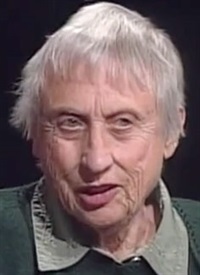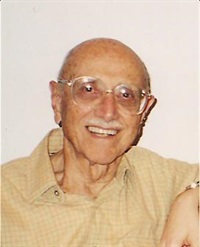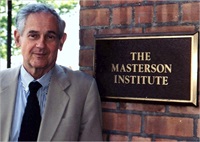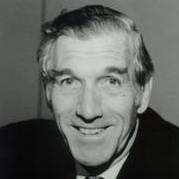Information
EP85 Panel 15 - Brief vs Long-Term Therapy - Mary M. Goulding, MSW; Judd Marmor, MD; James F. Masterson, MD; Paul Watzlawick, PhD
Original Program Date :
Length: 1:00:17
Description:
Educational Objectives:
- To compare and contrast clinical and philosophical perspectives of experts.
*Sessions may be edited for content and to preserve confidentiality*
Outline:
Introduction and Panel Overview
-
The 1985 Phoenix conference focuses on brief versus long-term therapy, featuring Mary Goulding, Judd Marmor, James Masterson, and Paul Watzlawick
-
Seating arrangement and roles are clarified; emphasis placed on keeping questions and comments brief
-
Mary Goulding opens by discussing motivations for brief versus long-term therapy, citing financial limitations and focused treatment goals
-
Describes using brief intermittent therapy techniques such as Gestalt and fantasy to address issues without creating long-term dependencies
Historical Context and Paradoxes in Therapy
-
Judd Marmor traces early psychoanalytic treatment, originally brief, evolving into extended therapy models
-
Notes paradox of healthy individuals in prolonged therapy; introduces concept of therapy as an open system
-
Suggests short-term therapy is appropriate for those with strong ego function and coping skills
-
Long-term therapy may be needed for individuals with deep-seated character disorders or psychosis
Treatment Approaches for Borderline and Narcissistic Disorders
-
James Masterson emphasizes that patients with borderline or narcissistic disorders often require long-term analytic therapy
-
Distinguishes between intensive analytic approaches and confrontive therapy aimed at ego repair
-
Offers case examples comparing both brief and long-term treatment outcomes
-
Stresses treatment should be matched to patient needs and financial realities
Alternative Views on Therapy and Change
-
Paul Watzlawick challenges the assumption of a rigid brief vs. long-term dichotomy
-
Advocates for focusing on change itself—especially spontaneous change—rather than treatment length
-
Criticizes rigid adherence to classical models, encouraging openness to alternative theories and empirical feedback
-
Emphasizes therapy should remain conceptually flexible and grounded in evidence
Moderator's Report and Panelist Responses
-
A study is shared showing that classical long-term therapy is not the norm among panelists
-
Mary Goulding clarifies that her idea of long-term therapy differs from classical models; patient choice is key
-
Judd Marmor revisits the open system idea, arguing symptom relief is necessary but not always sufficient
-
Notes the challenge of treating severely disturbed patients and cautions against idealizing spontaneous recovery
Debate on Therapy Techniques and Patient Needs
-
James Masterson questions the assumption that “healthy” individuals lack any neurotic symptoms
-
Discusses widespread psychiatric impairment and justifies the need for ongoing therapy in some cases
-
Paul Watzlawick critiques prevalence studies and supports a non-judgmental approach to client presentations
-
Panelists agree on the value of varied techniques and stress the need for cooperative development of outcome research
Ethical Considerations and Patient Outcomes
-
A floor question raises concern about “addicting” patients to therapy
-
Panelists address the balance between genuine therapeutic need and overreliance on treatment
-
Emphasize the importance of honest dialogue with insurance providers to secure appropriate care
-
Discuss broader implications of health maintenance organizations on therapy access and duration
Final Thoughts and Polemical Points
-
Sophie Freud critiques assumptions about what constitutes normality and the ethics of long-term therapeutic dependency
-
Questions whether therapy may displace other meaningful relationships in patients’ lives
-
Panelists respond by affirming the importance of individualized care and ethical vigilance
-
Session concludes with a call to respect therapeutic diversity and maintain open professional dialogue
Mary Goulding, MSW

Mary Goulding, MSW, is one of the leading exponents of Transactional Analysis. Along with her husband Robert Goulding, she developed an approach called Redecision therapy which synthesizes Transactional Analysis and Gestalt. Together they founded the Western Institute for Group and Family Therapy in Watsonville, California, and co-authored two professional books about their approach. There is also an edited volume about the Redecision model. Mary has served as a member of the Board of Trustees of the International Transactional Analysis Association and is a Teaching Member of that organization. Her M.S.W. was granted in 1960 from the School of Social Welfare, University of California, Berkeley.
Judd Marmor

Judd Marmor, MD, was an American psychiatrist known for his role in removing homosexuality from the American Psychiatric Association Diagnostic and Statistical Manual of Mental Disorders. Judd was an adjunct Professor of Psychiatry at the University of California in LA, was Franz Alexander Professor of Psychiatry at the University of Southern California School of Medicine. he has practices medicine for more than 50 years, having graduated from Columbia University College of Physicians and Surgeons in 1933. He is past president of the American Psychiatric Association, American Academy of Psychoanalysis, and The Group for the Advancement of Psychoanalysis, and The Group for the Advancement of Psychiatry. He is recipient of the Bowis Award for Outstanding Achievements in Leadership in the Field of Psychiatry from the American College of Psychiatrists and the Founders Award from the American Psychiatric Association. Dr. Marmor served on the editorial board of 14 journals.He authored five books and co-authored one. He has written or co-written more than 300 scientific papers. Much of his writing has been on psychoanalysis and human sexuality.
James F. Masterson, MD

James F. Masterson (M.D., Jefferson Medical School, 1951) was Director of the Masterson Group, P.C., which specializes in the treatment of adolescent and adult character disorders. Additionally, he was Director of the Masterson Institute (formerly Character Disorder Foundation); attending psychiatrist at New York Hospital, Payne Whitney Clinic; and Adjunct Clinical Professor of Psychiatry at Cornell University Medical College. Masterson has authored seven books and edited two volumes, mostly on the topic of psychoanalytic approaches to character disoreders and adolescents. His seminal work on the borderline personality has made him one of the most influential and studied practitioners of modern psychoanalytic methods.
Paul Watzlawick, PhD

Paul Watzlawick, received his Ph.D. from the University of Venice in 1949. He has an Analyst's Diploma from the C.G. Jung Institute for Analytic Psychology in Zurich. Watzlawick has practiced psychotherapy for more than 30 years. He was research associate and principal investigator at the Mental Research Institute. He was Clinical Professor at the Department of Psychiatry and Behavioral Sciences, Stanford University Medical Center. Watzlawick is a noted family therapist; he is recipient of the Distinguished Achievement Award from the American Family Therapy Association. Also, he is author, co-author or editor of eight books on the topics of interactional psychotherapy, human communication and constructivist philosophy.
He formulated five axioms. They are:
- It is not possible to not communicate. Every behavior is some kind of non-verbal communication.
- Every communication has a content. In addition, there is 'metainformation', which says how the communicator wants to be understood.
- All partners involved in a communication process also interpret their own behaviour during communication.
- Human communication involves both verbal and non-verbal communication. In addition to the spoken words, there are is also a non-spoken part (gestures, behavior, intonation..) which is part of the communication.
- Communication between humans is either symmetric or complementary. This is based on whether the relationship of those communicating is based on differences or parity.

